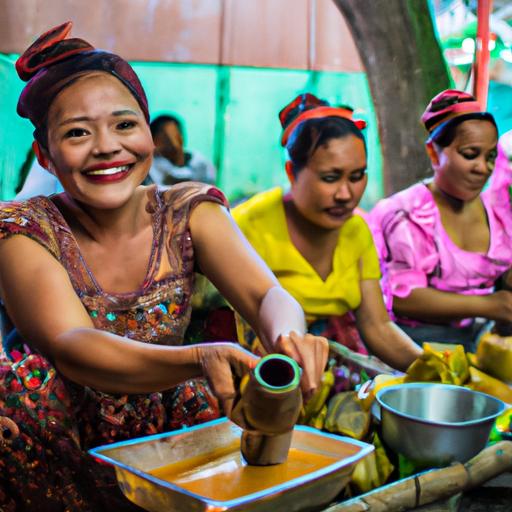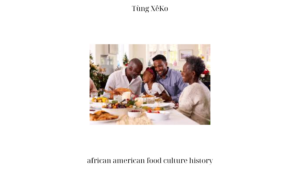Introduction to Food Culture in East Timor
East Timor, nestled in the eastern part of Southeast Asia, is a land of diverse landscapes, rich history, and vibrant culture. One aspect that truly reflects the essence of this nation is its food culture. In this article, we embark on a culinary journey through the flavors, traditions, and influences that shape the unique food culture in East Timor.

Traditional East Timorese Cuisine
A Melting Pot of Staple Foods and Dishes
Rice, the staple food of East Timor, takes center stage in many traditional dishes. From aromatic rice delicacies like “Arroz Doce” (sweet rice) to hearty rice-based stews such as “Batar Da’an” (rice with corn and pumpkin), the importance of rice in East Timorese cuisine is undeniable. Alongside rice, indigenous vegetables and fruits play a vital role in creating delightful and nutritious meals. The vibrant colors and flavors of “Ikan Saboko” (marinated grilled fish) and “Batar Da’an Malu” (pumpkin with peanuts) showcase the abundance of seafood and produce found in the region.
Time-Honored Cooking Techniques and Utensils
East Timorese cuisine is deeply rooted in traditional cooking techniques that have been passed down through generations. Grilling and smoking are popular methods used to enhance the flavors of fish, meat, and vegetables. Clay pots and bamboo steamers are traditional utensils that add a unique touch to East Timorese dishes. The act of communal cooking and sharing meals holds significant cultural value, bringing people together in a spirit of unity and togetherness.

Influences on East Timorese Food Culture
Portuguese Influence on Cuisine
The historical influence of Portuguese colonization has left an indelible mark on East Timorese food culture. The introduction of spices, herbs, and ingredients like chili peppers, coriander, and tomatoes has added depth and complexity to traditional dishes. Portuguese influence can be seen in popular dishes like “Feijoada,” a hearty bean stew with pork, and “Bolo Levedo,” a sweet and fluffy cake enjoyed during special occasions.
Indonesian Influence on Cuisine
The Indonesian occupation of East Timor also played a role in shaping the local food culture. Indonesian culinary influences brought dishes like “Nasi Goreng” (fried rice) and “Sambal” (spicy condiment) to the region. This blending of flavors and cooking styles created a unique fusion that is still celebrated today.
Preserving Indigenous Food Practices and Customs
Amidst external influences, East Timor has managed to preserve its indigenous food practices and customs. Traditional farming methods, such as “Tara Bandu” (community-based land management), ensure sustainable agriculture and the preservation of traditional crops. The respect for ancestral wisdom and the connection between food and cultural identity remain strong, forming the foundation of East Timorese food culture.

Modern Changes and Future of East Timorese Food Culture
Impact of Globalization and Urbanization on Food Habits
As East Timor embraces modernization and urbanization, the food habits of its people have undergone some changes. The introduction of new ingredients and the influence of fast food culture have presented both opportunities and challenges. While traditional dishes continue to be cherished, there is a growing popularity of international cuisines and the incorporation of foreign flavors into East Timorese cooking.
Efforts to Preserve and Promote Traditional Food Culture
Recognizing the importance of preserving their culinary heritage, local communities, NGOs, and the government have taken initiatives to promote traditional food culture in East Timor. Educational programs, cultural festivals, and community-driven projects aim to raise awareness and appreciation for local ingredients, traditional cooking techniques, and the significance of communal dining.
Culinary Tourism and Economic Opportunities
East Timor’s unique food culture holds great potential for culinary tourism. As travelers seek authentic experiences and local flavors, the exploration of traditional markets, cooking classes, and farm-to-table experiences can contribute to the growth of the tourism industry. This, in turn, presents economic opportunities for local farmers, artisans, and entrepreneurs.
Conclusion: A Taste of East Timor with Tùng XêKo
In conclusion, the food culture in East Timor is a tapestry woven with ancestral traditions, historical influences, and contemporary adaptations. The flavors, techniques, and communal spirit found in East Timorese cuisine make it a truly remarkable experience for food enthusiasts and cultural explorers alike.
At Tùng XêKo, we invite you to delve into the rich culinary heritage of East Timor and embark on a flavorful journey that celebrates the vibrant food culture of this remarkable nation. Join us in preserving and promoting the traditions that make East Timor a unique gastronomic destination.
Visit Tùng XêKo to explore more articles on food culture and travel


